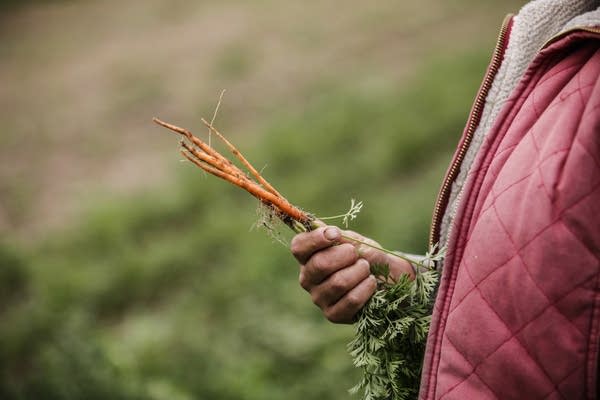Food and farming from Annual to Sugar beet

Sarah Woutat holds a bunch of carrots at her Uproot Farm in Princeton, Minn., in July.
Maria Alejandra Cardona | MPR News
Go Deeper.
Create an account or log in to save stories.
Like this?
Thanks for liking this story! We have added it to a list of your favorite stories.


